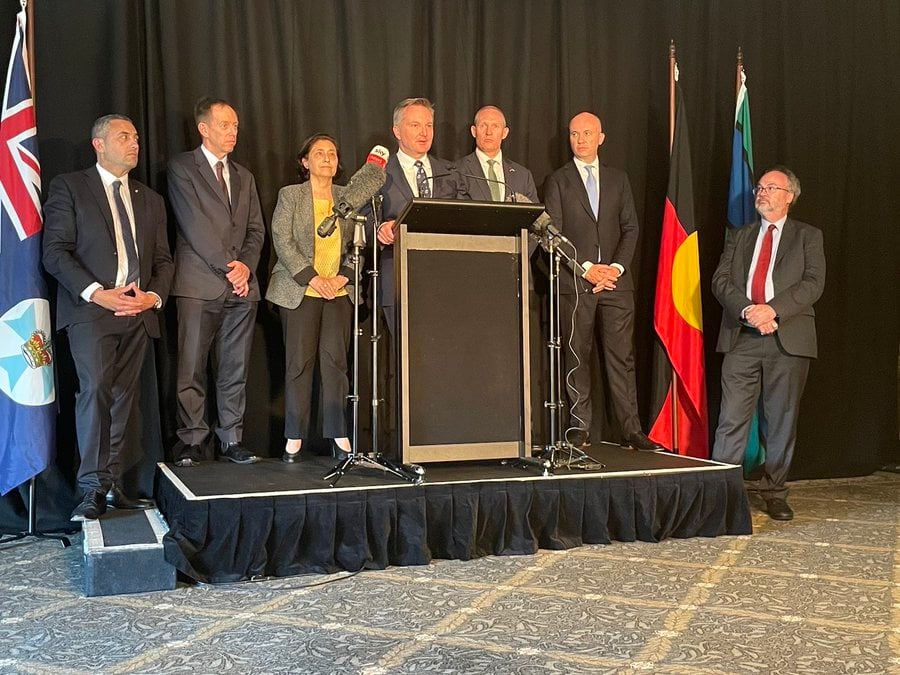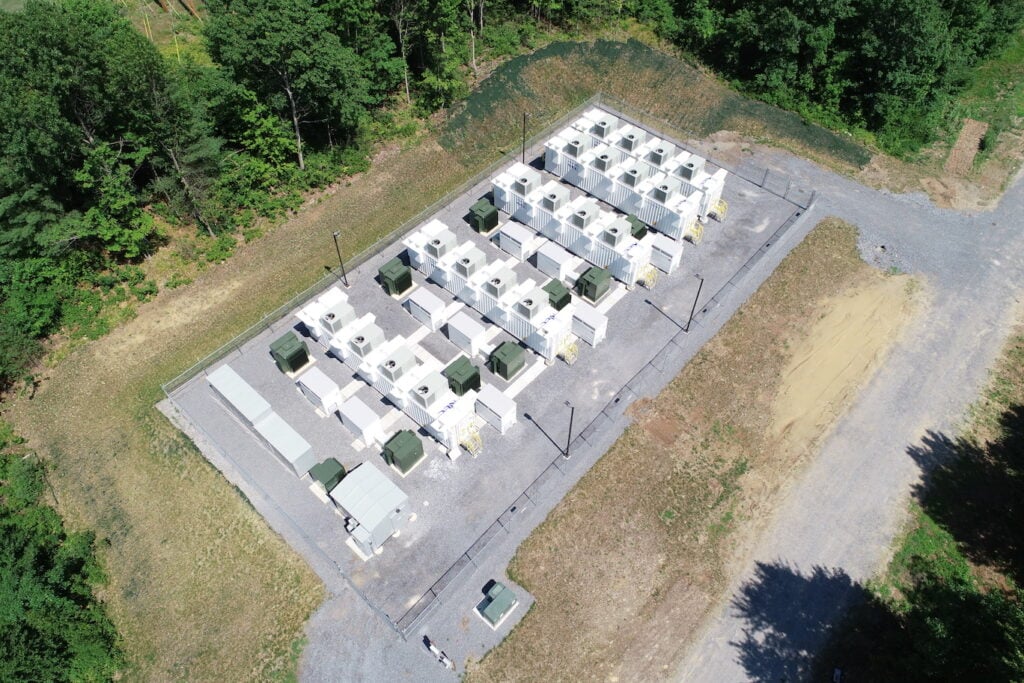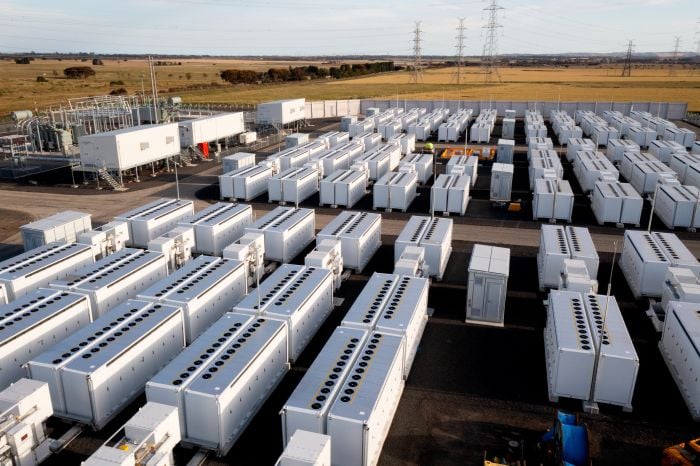
Australia and New York state are two very different places but both are likely to soon see their first government-backed tenders in which grid-scale energy storage can compete.
The tenders are likely to be very different in design and scope. However, the aim of both is to create a mechanism that values the critical role of energy storage in enabling and accelerating the transition away from fossil fuels.
Enjoy 12 months of exclusive analysis
- Regular insight and analysis of the industry’s biggest developments
- In-depth interviews with the industry’s leading figures
- Annual digital subscription to the PV Tech Power journal
- Discounts on Solar Media’s portfolio of events, in-person and virtual
The key will be to do this while maintaining stability of the grid and reducing consumers’ exposure to social risks on climate and pollution, and avoiding the economic risk of volatile or high energy prices.
You can be forgiven for missing the news, as it emerged towards the end of 2022, but it is safe to say that in both regions, it has been greeted warmly by industry and advocates for clean energy.
Energy-Storage.news spoke with two experts in those regions: Dr William Acker, executive director of the New York Battery and Energy Storage Technology Consortium (NY-BEST) and Dr Bruce Mountain of the Victoria Energy Policy Centre think tank in Australia.
Quick recap: What’s happened?
Australia’s federal government, elected last year on a platform that included promises to tackle the climate crisis, convened a meeting of energy ministers from the country’s states in December.
There, it was decided in principle that a so-called Capacity Investment Mechanism will be introduced to procure dispatchable, but low-carbon, energy sources. It’s something that has been discussed for a while, with Australia’s energy markets undergoing fundamental reforms since 2019, but has become more acute given last year’s global energy crisis.
So while an energy storage target should already have been the biggest priority for the Australian government anyway, according to Mountain, federal energy minister Chris Bowen pointed out that the scheme aims to put “downward pressure” on wholesale energy prices.
In short, while the tenders are not explicitly energy storage procurements, and the scheme’s design is yet to be discussed, the most important thing is that the ministers agree on what Bruce Mountain calls its “most essential detail”: that it will exclude coal and gas.
In New York meanwhile, the state’s Energy Storage Roadmap 2.0 plots a course to achieving a 6GW energy storage deployment target by 2030. That’s the amount of state-supported energy storage considered necessary to get New York towards its 70% renewable energy goal by that time, and 100% carbon-free electricity by 2040.
With about 1.3GW already contracted and therefore accounted for, that leaves 4.7GW of resources to procure. While a significant portion is expected to come from distributed residential and commercial and industrial (C&I) storage, 3GW of utility-scale storage over 5MW – defined as ‘bulk’ storage – will be tendered for.
Regular Energy-Storage.news readers will have already seen Acker’s comments to the effect that the tender scheme – again still at a very early stage of proposals that require approvals and possible adjustment – is very well thought out and responds to the needs of the energy storage industry and New Yorkers alike.

Australia
For Australia’s government, led by Prime Minister Anthony ‘Albo’ Albanese and the Labor Party coming to power in May last year, “the mandate from the people was for expansion of transmission and storage, but the emphasis arguably was on transmission”.
“I think they’ve come to the view and made the decision now to be very explicit about expanding storage,” Mountain said.
The Victoria Energy Policy Centre (VEPC) have in the past advocated for Australia to have a national energy storage target, the way New York, and in fact some of Australia’s own states, have. That’s because although energy storage is both essential to the energy transition and a good earner, it comes with a degree of investor risk associated with the merchant nature of the market.
Although the Australian Energy Market Operator (AEMO) has made moves to accommodate energy storage and other clean energy technologies into the National Electricity Market (NEM), already making coal less competitive, this is still not considered sufficient to drive the deployment of some 46GW/640GWh of storage the NEM needs by 2050, according to AEMO’s modelling.
While Mountain had suggested that an Energy Storage Target scheme would work along the same lines as Australia’s Renewable Energy Target (RET) mechanisms, which are tradeable credits like RECs in the US or ROCs in the UK, the new scheme, at least at this very early stage, looks to be pretty different.
“It’s ostensibly not a RET-type mechanism, a tradeable permit scheme. It’s ostensibly an auction-based scheme, where storage of various different forms will receive some kind of a contract for a period of time, certainly for the large-scale stuff,” Mountain said.
There is likely to be a tradeable permit scheme for storage too, but that is expected to cover small-scale, distributed energy storage, similar to the existing scheme for solar PV, which Mountain explains is a fixed price obligation scheme.
Meanwhile, the two key things developers and investors will be looking for in the final large-scale solicitation scheme are likely to be that they can contract with a government entity for off-take for at least a portion of the revenues they require long-term, and they can establish a floor price under their income to decrease the risks they face, he added.
New York
New York’s proposed tenders are at a further stage of their design, particularly as they will be aiming to achieve the specific goals of the state’s Climate Law and Community Protection Act (CLCPA).
The legislation not only sets the agenda for achieving an emissions-free energy system, but also seeks to stimulate the economy, address historic climate injustices – put simply, the fact that many of the most polluting power plants in the state are in poorer areas – and improve air quality throughout.
Roadmap 2.0’s draft has been put together by public bodies New York State Energy Research and Development Agency (NYSERDA) and the Department of Public Service (DPS) and aligned with the New York Climate Action Council’s Scoping Plan for delivering on the CLCPA that was published shortly before the roadmap.
The solicitations – if approved without substantive alterations through the regulatory process – are for those ‘bulk’ facilities with over 5MW power output per asset.
The developer bids a strike price into the tender, indicating the revenues they require to make the project pencil out. This price is referenced against a price indicator set by the state, which will be based on forecasting and data of what such a project might expect to earn in the NY ISO wholesale and day-ahead markets.
If the reference price falls below the strike price, the state will pay out the difference, making up the shortfall of what a developer or project owner might “reasonably expect” to pay.
The scheme is based on what will be called the Index Storage Credit. What Acker thinks will be key to it working properly is that it continues to put the risk onto developers rather than the public purse, but it reduces that risk significantly enough to incentivise investment.
Roadmap 2.0 builds on the previous Roadmap 1.0 that came out in 2018, and established the Market Storage Bridge Incentive. Aimed at stimulating deployments at commercial and industrial (C&I) scale, or as New York defines it, ‘retail’ energy storage, as well as bulk, it was more a direct incentive scheme.
That did the trick for retail, Acker said, opening up that market segment, and Roadmap 2.0 includes a similar direct incentive scheme for it, partly also based on the New York Sun programme for incentivising distributed solar.
However, the Roadmap 2.0 authors recognised that the direct incentive wasn’t as successful for bulk storage and adjusted accordingly.

Unusual optimism
Let’s be honest here. It’s quite rare to hear such optimism from folks working to advance climate solutions and climate-focused technologies of the kind expressed by Acker and Mountain.
Both experts say they are very pleased with the developments and look forward to seeing their progress.
One obvious difference between the two is that Australia’s scheme covers a nation, made up of states, while New York is a state within a nation.
That matters in the sense that, as Mountain pointed out, the role of the federal government in Australia in its dispatchable clean energy tenders will be more of an overseeing and coordinating one, with much of the real decision-making and implementation left to individual states.
That, again, is good news, because 2022 was characterised by breakthrough after breakthrough on clean energy policy in Australia’s states, with Queensland and Victoria among those aggressively pursuing their energy transitions and including energy storage very much within that scope.
This latest step by Prime Minister Albanese’s Labor Party government is its own “major breakthrough” to match Victoria’s energy storage target or Queensland’s energy transition plan, Mountain said.
“This is the federal government coming to the party, in the context in which the states have themselves already got going, and I think it’s got the Federation focusing on the right issues, that deserve the greatest potential, which is essentially the expansion of storage.”
For New York, the positive steps forward represented by the Roadmap 2.0 will be complemented by national policy changes, most notably the Investment Tax Credit (ITC) brought in for standalone energy storage by the Inflation Reduction Act (IRA) that will provide significant reductions in the upfront capital cost of projects.
At the same time, the state is seeing clean energy as a strong driver to revive its manufacturing and accelerate technology-based industries, which NY-BEST is also deeply involved in. Acker refers to the New Energy New York initiative, which is a partnership between the federal and state government to accelerate battery R&D and manufacturing in the region.
NY-BEST was pleased to find that the state was “very receptive to industry and stakeholder input” in designing the Roadmap 2.0 and Index Storage Credit Scheme. As such, it aligns well with many of the things the trade group wanted to see in design, Acker said.
While some gaps remain, such as the need to recognise the role of long-duration energy storage (LDES), if not now, then in the next few years, or the potential role of energy storage on transmission networks, it sounds as though for now, the right topics are being talked about – in Australia as well as in New York.
Energy-Storage.news’ publisher Solar Media will host the 5th Energy Storage Summit USA, 28-29 March 2023 in Austin, Texas. Featuring a packed programme of panels, presentations and fireside chats from industry leaders focusing on accelerating the market for energy storage across the country. For more information, go to the website.
Energy-Storage.news’ publisher Solar Media will host the 1st Energy Storage Summit Asia, 11-12 July 2023 in Singapore. The event will help give clarity on this nascent, yet quickly growing market, bringing together a community of credible independent generators, policymakers, banks, funds, off-takers and technology providers. For more information, go to the website.

